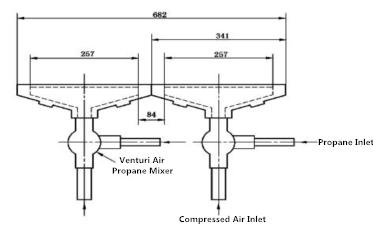Exploring the Manufacturing Processes of Profile Projectors in Industrial Settings
Understanding Profile Projectors A Comprehensive Overview
Profile projectors, also known as optical comparators, are essential tools in the field of manufacturing and quality control. These precision instruments allow engineers and technicians to visualize the detailed profile of machined parts, which are critical in ensuring that components meet stringent specifications. In this article, we will explore what profile projectors are, their applications in factories, the technology behind them, and the advantages they offer in today’s manufacturing processes.
What are Profile Projectors?
A profile projector is an optical device that projects the silhouette of a precisely machined part onto a screen through a series of lenses. The part is illuminated from below, and its profile is displayed, allowing operators to measure and inspect the dimensions and shapes of the component in real-time. The displayed image can be enlarged, providing greater detail for analysis. This capability is crucial for ensuring parts are manufactured to the exact specifications and tolerances required.
Applications in Manufacturing
Profile projectors are widely used in various industries, including automotive, aerospace, medical devices, and electronics. The versatility of these instruments makes them ideal for inspecting components such as gears, shafts, and complex mechanical parts. In factories, profile projectors play a critical role in quality control, helping manufacturers ensure that each part meets precise dimensions before it is integrated into larger assemblies.
The inspection process often involves comparing the part’s profile against a defined standard or blueprint. This comparison allows for quick identification of any deviations or defects, enabling manufacturers to make necessary adjustments during the production process. Additionally, many factories employ these tools for reverse engineering, where engineers analyze a pre-existing part to create a new design or improve upon it.
Technology Behind Profile Projectors
The core technology behind profile projectors involves a combination of optics and mechanics. The device typically consists of a high-intensity light source that illuminates the object from below, a projection lens that magnifies the image, and an adjustable screen where the image is displayed. Advanced models may include digital readouts, which provide precise measurements and allow for automated inspection processes.
profile projectors factories

Many profile projectors also incorporate digital imaging technology. This integration enables users to capture images of parts for further analysis, archiving, or reporting. With software capabilities, operators can perform automatic measurements, making the inspection process faster and more efficient. This technological enhancement has significantly improved the accuracy and reliability of measurements.
Advantages of Using Profile Projectors
One of the primary advantages of profile projectors is their ability to provide immediate visual feedback. Operators can swiftly identify any discrepancies in part dimensions, which allows for rapid decision-making on the production floor. This immediacy can prevent costly rework and scrap, ultimately leading to better resource management.
Moreover, profile projectors are user-friendly and require minimal training to operate effectively. This ease of use makes them accessible for various personnel within a manufacturing environment, ensuring that quality control processes are upheld consistently.
Another significant benefit is the non-destructive nature of the measurements taken with profile projectors. Unlike some other measuring techniques that might alter the test part, profile projectors allow for thorough inspections without damaging the component, making them suitable for valuable or sensitive items.
In addition to their practicality, profile projectors are also versatile. They can be used to inspect various material types, including metals, plastics, and composites. This adaptability is particularly important in factories that handle numerous different materials and parts.
Conclusion
In summary, profile projectors are vital instruments in modern manufacturing factories that enhance quality control processes. Their ability to provide accurate, real-time measurements and visualizations of complex parts ensures that manufacturers can maintain high standards of production. As technology continues to advance, the role of profile projectors is likely to grow, driving further improvements in precision engineering and manufacturing efficiency. For any factory committed to quality, incorporating profile projectors into their inspection processes is a strategic decision that can lead to better outcomes and customer satisfaction.
-
Why the Conductor Resistance Constant Temperature Measurement Machine Redefines Precision
NewsJun.20,2025
-
Reliable Testing Starts Here: Why the High Insulation Resistance Measuring Instrument Is a Must-Have
NewsJun.20,2025
-
Flexible Cable Flexing Test Equipment: The Precision Standard for Cable Durability and Performance Testing
NewsJun.20,2025
-
Digital Measurement Projector: Precision Visualization for Modern Manufacturing
NewsJun.20,2025
-
Computer Control Electronic Tensile Tester: Precision and Power for the Modern Metal Industry
NewsJun.20,2025
-
Cable Spark Tester: Your Ultimate Insulation Assurance for Wire and Cable Testing
NewsJun.20,2025
 Copyright © 2025 Hebei Fangyuan Instrument & Equipment Co.,Ltd. All Rights Reserved. Sitemap | Privacy Policy
Copyright © 2025 Hebei Fangyuan Instrument & Equipment Co.,Ltd. All Rights Reserved. Sitemap | Privacy Policy
